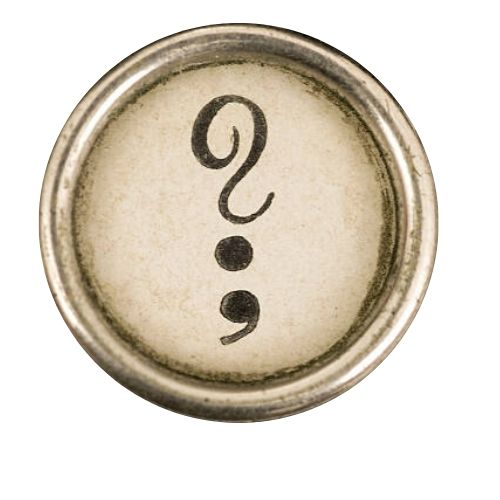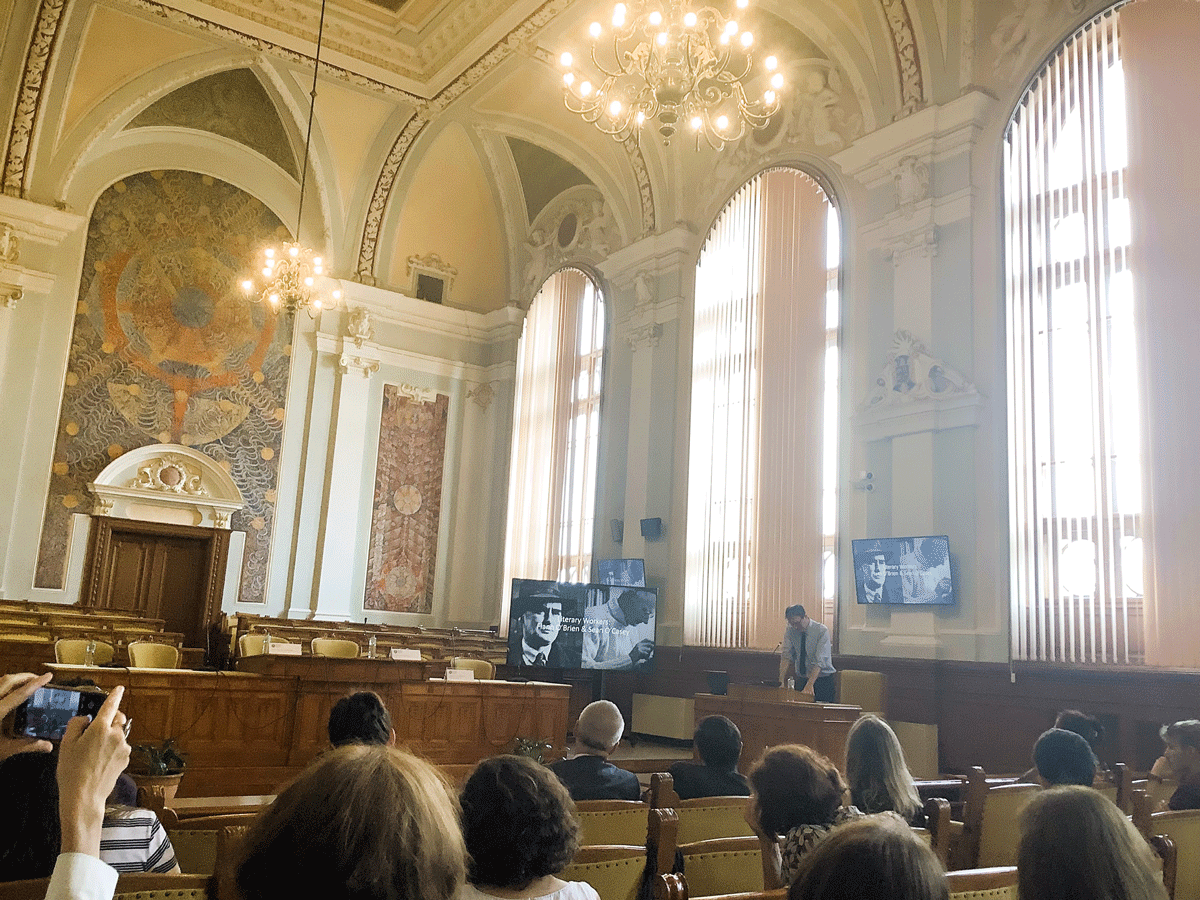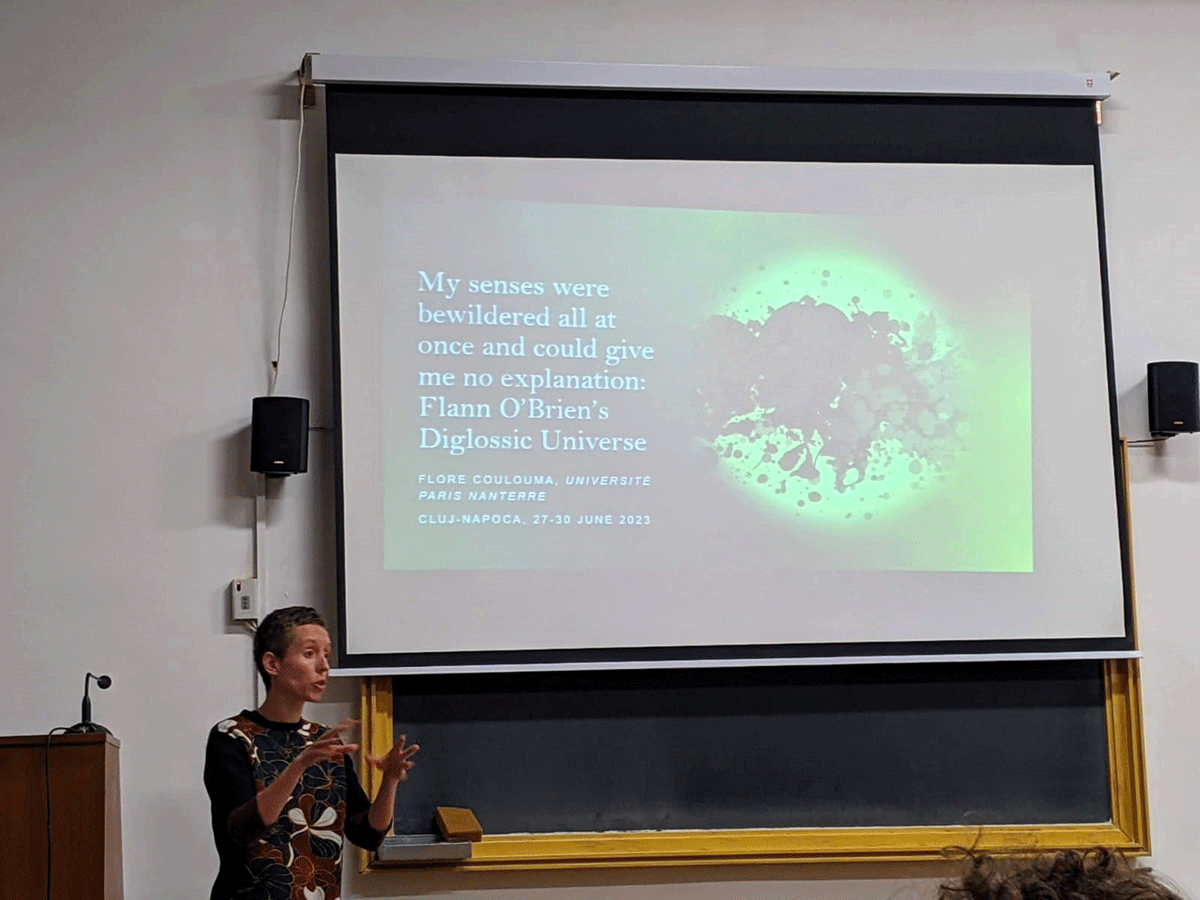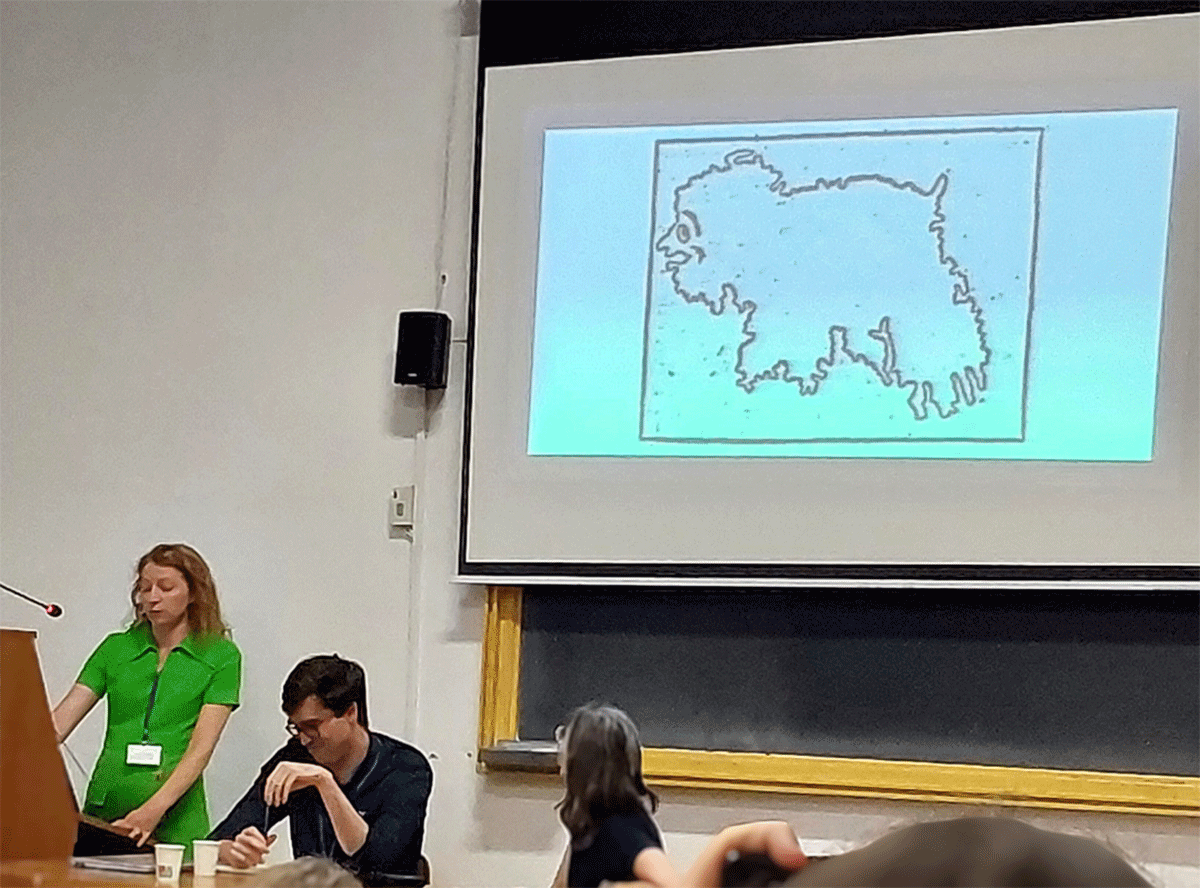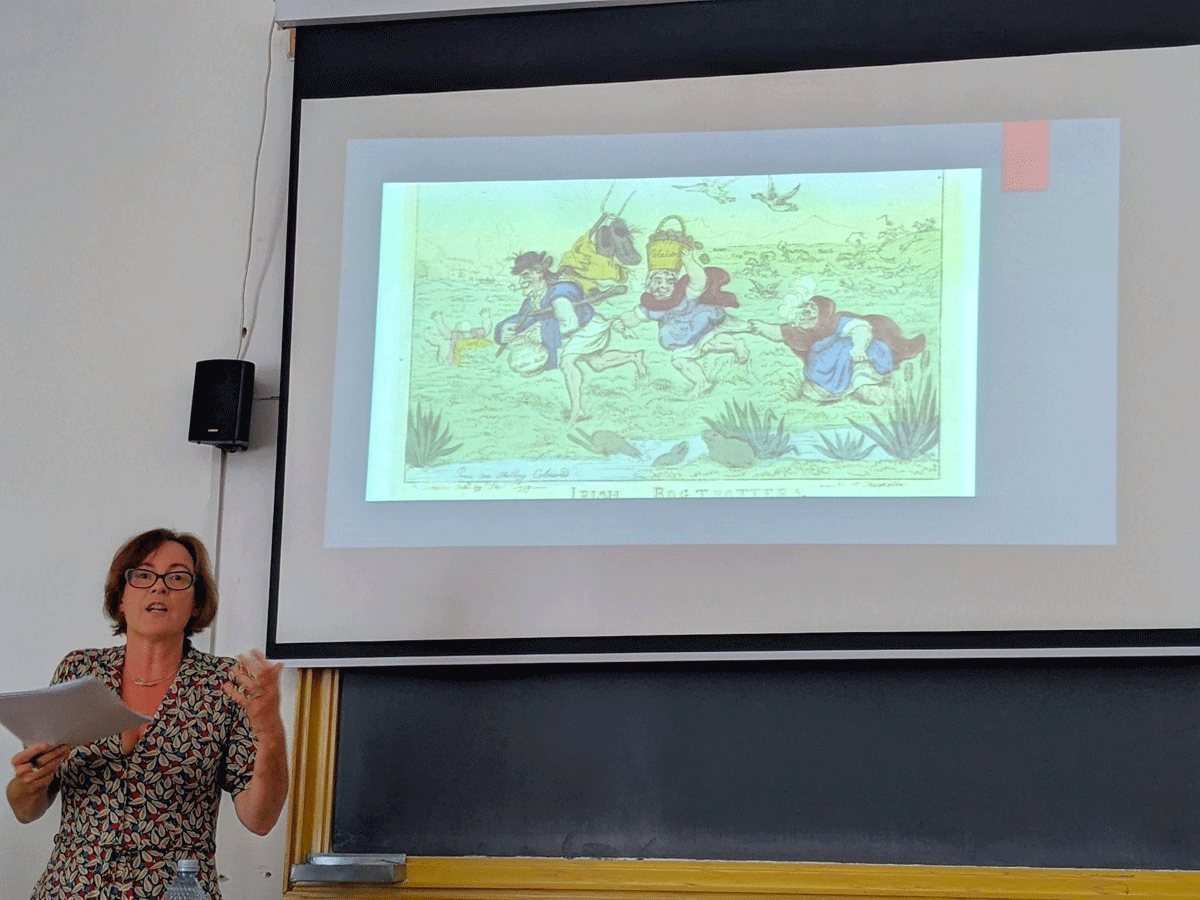It is easy to imagine that Flann O’Brien himself would have been tickled by the idea of an international conference devoted to his work in Transylvania, and no less pleased with the unique trilingual component of the host institution at Babeș-Bolyai University in Cluj-Napoca. That so many of the domestic Flann contingent would be arriving at Dublin Airport with defensively weighed luggage to board the weekly Ryanair flight to Cluj seems like something straight from a Cruiskeen Lawn bulletin.
The first keynote, delivered by Joseph Booker in the most ornately decorated room I have ever beheld (Figure 1), followed words of welcome from University Rector, Daniel David; Dean of the Faculty of Letters, Rareș Moldovan; and the Irish Ambassador to Romania, His Excellency Paul McGarry. Further to disclosing a longstanding love of O’Brien and the liberating impact of reading his work, McGarry remained a steady presence in the lecture theatre audience for much of the remainder of the conference. Booker’s remarks on Literary Workers, exploring connections between Seán O’Casey and O’Brien, revealed a complex and fraught literary protégé relationship, and gave cause to consider O’Brien’s position among the plain (speaking) people of Ireland. This wonderful discussion, ranging over anxieties about the possibility of an appropriation claim against O’Brien’s use of the ‘Dub’ accent and allegations levelled at O’Casey by O’Brien of Irish writing ‘for export only’, seemed playfully enhanced by its remarkably opulent setting. Post-lecture, we were treated to a reception meal in the university restaurant at Emmanuel de Martonne Street, which included an abundance of wine, cakes, and a generous helping of (both literal and figurative) ‘beef’ between the rivalling Cork and Roscommon Flann delegations.
The next morning, the first panel ‘Winds! Wiiiiiinds!!’ settled us into proceedings. Joseph LaBine’s paper began with Niall Montgomery’s 1970s recorded readings from The Third Policeman and At Swim-Two-Birds. LaBine shed light on the Medieval Irish scholarly heritage of Old Mathers’s discourse on the infinitely fine, policeman-fabricated infant gowns, showing the coherence of Mathers’s squally aesthetic theory with that in Saltair na Rann. Of all the achievements of public oration witnessed over the course of the conference programme, few can compete with Tobias W. Harris’s presentation (sometime co-presentation) of three distinct papers on one day. The first, alongside distinguished collaborator Einat Adar, revealed connections between DeSelbian atomic theory and Bergsonian vitalism, charting the changing nature of O’Brien’s engagements with vital theories from their presentations in The Third Policeman and The Dalkey Archive, and in the hands of different literary mouthpieces.
The second keynote – on Vibrant Atmospheres – was given by Paul Fagan. This majestic talk, accompanied by a wonderful scrolling slideshow, took us through four key atmospheres evoked in O’Brien’s oeuvre: (i) meteorological; (ii) societal; (iii) social; and (iv) literary. The talk touched on themes such as collective emotion, mood, and atmospheric interference, and engaged with theoretical conceits ranging from the eco-philological to the immersive phenomenology of enveloping atmospheres.
After lunch, we returned to a second panel session, replete with ‘Textual Bodies/Archival Pleasures.’ Catherine Flynn opened the session with an exploration of the treatments of mad, wandering Suibne mac Colmáin found in At Swim-Two-Birds and Sweeney Astray, probing the different political and poetical realities of O’Brien’s and Heaney’s literary worlds. Maebh Long gave the middle paper, drawing us into the world of the earliest known typescripts of At Swim-Two-Birds (Figure 2). Her talk revealed that the Trellis of the final, published text is perhaps a pared-down, somewhat restrained re-working of an initially wholly divine creator character. Harris returned to finish the panel with a turn to Blather and the world of the literary magazine. In a fascinating comparative analysis, Harris invited us to consider the radical literary politics of Blather against those of FIRE!! – the planned quarterly journal of key Harlem Renaissance figures that circumstances conspired to terminate after just one edition in 1926.
Following a coffee break, we moved onto a panel dedicated to the theme of ‘Strange Transmissions.’ Securing his hattrick, Harris told us about the experience of podcasting on Flann. We were treated to a recap of season one of ‘Radio Myles,’ which featured conversations with numerous esteemed individuals in the room, with additional insights into the production and broadcasting process.1 Stan Erraught opened his talk on sound and unsound in The Third Policeman with a delightful video showing a metal version of John Cage’s famous experimental piece, ‘4.33.’ The talk ruminated on the strange status of musical noise in O’Brien’s novel – for example, musical instruments whose outputs are startling omissions and conversations likened to ‘warm, enchanted silence.’ Harun Šiljak brought us on a welcome pivot to The Poor Mouth and Shannon’s mathematical communication model. Šiljak introduced us to some key ideas underscoring this more formal understanding of language and revealed insights from The Poor Mouth on language as noise, linguistic entropy, and redundancy. The final talk of the session was given by Dieter Fuchs and focused on the likely status of ‘The Martyr’s Crown’ as a parody of the Annunciation. Truly a highlight of the day’s proceedings, the bawdy imagery of the slideshow (coupled with repeated use of the word ‘naughty’) elicited audible gasps and visible blushes from an audience eight hours deep in conference thought.
The final session of the day was a ‘Roundtable on the Biography’ with a panel boasting Deirdre Learmont, Ian Ó Caoimh, Oisín Ó Nualláin (Flann O’Brien’s nephew), and Brian Ó Conchubhair, the author of the forthcoming Irish-language O’Brien biography An Saol Bocht. In addition to engaging with anonymous questions collected from the audience throughout the day, the speakers took us through topics including the life and work of Ciarán Ó Nualláin; deeper insights from the world of the broader Ó Nualláin family; the deeply interconnected milieu of Irish scholarship in twentieth-century Ireland; and the specific idiosyncrasies of biography writing as Gaeilge, especially when the subject of study comes into contact with your own family.
The next morning, we reassembled for the fifth panel: ‘Under the Influence: Textual Distortions.’ Talia Abu opened with the sober business of O’Brien’s ‘Drink and Time in Dublin’ (1946), examining the relationship between alcohol and anti-narrative storytelling, including O’Brien’s use of drinking and forgetting as a device of fraught literary epistemology and for manufacturing uncanny atmospheres. Elliott Mills followed up with a focus on black air and the notion of accretions in The Third Policeman and The Dalkey Archive. Mills revealed how the idea of accretion could provide a metaphorical framing for the authorial process of The Dalkey Archive. Erika Mihálycsa closed the session with a discussion of modernist literary recycling in O’Brien. The talk revealed O’Brien’s tendency to position himself and his work in fascinating ways, via re-purposed literary and symbolic objects.
Flore Coulouma delivered a wonderful mid-conference keynote, which brought its captivated listeners on a journey through a vast range of linguistic and semantic ideas that pervade the Flann canon (the Flannon?), including those of O’Brien’s fellow prickly-personalitied linguistic innovator, Ludwig Wittgenstein (Figure 3). Drawing together a multitude of themes that would emerge in other formats throughout the conference, the talk terminated in Wittgenstein’s Tractarian mandate that ‘whereof one cannot speak, thereof one must be silent.’
After lunch, we returned to assess some of the ‘Politicised Environments’ of the author. Frank McNally opened the panel session with an introduction to the work of Art Flann, an early twentieth-century contributor of satirical and pithy columns to, among other outlets, the Strabane Chronicle. McNally argued, via the particular topical suitability and timing of the columns, that the author was Flann’s father Michael Victor O’Nolan, and in doing so suggested a nominal lineage for O’Brien’s nom de plume. Róisín Costello followed up with a fascinating tour through the world of the Cruiskeen Court of Voluntary Jurisdiction. Costello positioned these and related bureaucratic writings as analysable within an Irish tradition of utilising satire as a kind of regulatory mechanism in highlighting the limitations of legal and institutional power in politicised and transitional times. Brian Ó Conchubhair closed the session with a look at the life and work of ‘the other uncle,’ the cleric and academic Feargus Ó Nualláin. Emphasising the tendency towards literary and journalistic hoaxing shared by Feargus and Flann (epitomised in a hilarious quoted exchange beginning in appeals for common sense explanations of the new relativistic physics), Ó Conchubhair showed how Feargus may have provided a route into The Irish Times for his nephew.
The final panel of Day 3 featured ‘Small Worlds: Local, Global, Planetary.’ Dominic Harkin warmed us up with thoughts on global annihilation, showcasing O’Brien’s talent for prescient existential worry. Harkin pointed us towards Flann’s sense of the dignity of old-fashioned fighting in the face of increasingly technically-enhanced and immorally anonymous warfare. Alana Gillespie presented O’Brien’s ideas on a flexibly positioned, geographically unmoored Ireland. Accompanied by some of the most delightful imagery from the conference (Figure 4), Gillespie broached less-charted waters of O’Brien’s oeuvre, including tourism (such as the merits of keeping the place filthy for American idealists craving proof of a truly decrepit ancestry), nationalism, and geopolitical neighbour relations. I gave my own talk on this panel. Pregnant with the expectation of a hostile crowd, I was hugely relieved when nobody seemed openly frustrated by a talk linking O’Brien’s vanishingly small literary devices and Leibnizian infinitesimal calculus. Petronia Petrar closed out the second day with an analysis of recursive strategies in The Third Policeman. Petrar’s talk showed the scope for an ethical reading of O’Brien’s novel somewhere between singularity and authoritative submission. With that, the day’s work gave way to an evening of musical and gastronomical delights.
The morning panel of the conference’s fourth and final day featured two talks on O’Brien’s ‘ersatz’ and ‘uncanny’ representations of Ireland. Perhaps trying to one-up Erraught’s discussion of O’Brien’s affinities with avant-garde metal the previous day, Connor Browne opened his talk with a surprising and evocative side-by-side comparison of O’Brien’s late-career novel The Hard Life and the abrasive lyrics and music of Mark E Smith’s The Fall. From this launching point, Browne explored Flann O’Brien’s creation of an ‘ersatz Ireland’ as a reflection of the rebellious spirit and fundamental mistrust of authority which characterises his novels. Thierry Robin drew on Japanese Robotics professor Masahiro Mori’s theory of the uncanny valley to unpack the disturbing effect of human-like automata in The Third Policeman, such as the mechanical eyes of Old Mathers and The Parish’s seemingly autonomous bicycles. By focusing on its uncanny hybrid bodies and unsettling in-between states, Robin argued that O’Brien’s work exemplifies not only a partitioned Ireland, but also Seamus Deane’s characterisation of the island as a ‘strange country.’
In the week’s final keynote address, Heather Laird sketched out Myles na gCopaleen’s ingenious bog schemes in Cruiskeen Lawn as a point of entry into a fascinating colonial, economic, and socio-cultural history of Bord na Móna and Irish rural industrialisation campaigns (Figure 5). Laird’s account cast fresh light on The Third Policeman’s imagery of ‘brown bogs and black bogs’ and scenes of ‘turf-work,’ and ended on a hilarious ‘bum note’ from a letter O’Brien wrote to Niall Montgomery: ‘Noticing a turf lorry today I saw they call themselves BNM. Pity they’re not Bord um Mhoin – wonderful accurate initials that would give!’
Wrapping up proceedings with the week’s final panel session, James Candon explored the language of science as a narrative device in The Third Policeman, while Kris Peeters used the latest digital tools from translation theory – or more precisely, retranslation theory – to address Bernard Hoepffner’s charge that Patrick Hersant’s 2002 French translation of At Swim-Two-Birds had plagiarised Henri Morissot’s 1964 translation of the novel as Kermesse irlandaise. Peeters showed that Hersant’s translation differs most markedly from the 1964 version in the first part of the book, but by the end is reproducing large chunks of Morissot’s translation verbatim, thus exposing it as an instance of ‘retranslation’ rather than translation proper. Rather than a case of ‘gotcha’ criticism, however, Peeters used the comparison as a fascinating launching point for reflections on the economic pressures and realities of the translator’s work, and the tricky question of what actually constitutes ‘plagiarism’ in the field of translation.
After an arduous trek up the city’s hills, the sixth International Flann O’Brien Society Awards ceremony took place at the Restaurant Panoramic, at the symposium’s closing dinner. Overlooking the city of Cluj-Napoca, conference co-organiser Ruben Borg read first the shortlisted nominees and then the winners, as well as the independent judge’s official remarks. The Best Article Award was presented, to the well-earned cheers of the assembled crowd, to Maebh Long, for her chapter ‘Plagiarism and the Politics of Friendship: Brian O’Nolan, Niall Sheridan, and Niall Montgomery,’ and the Best Monograph Award was bestowed upon Paul Fagan and Dieter Fuchs’s 2022 edited collection Flann O’Brien: Acting Out.
Final thanks are due to the organisers, Ruben Borg, Erika Mihálycsa, Rareş Moldovan, and Petronia Petrar for a fantastically warm and exuberant conference. As a complete newcomer to the world of Flann O’Brien studies, I was thrilled to discover the wit and cleverness of the author so charmingly re-instantiated in his interpreters. Interdisciplinarity is a word much bandied about in modern academia, but this conference truly showed what different modes of thinking can bring to the appreciation of an author and a canon. As to the lovely atmosphere of Cluj, the senses took keen pleasure from merely breathing the air and discharged their functions with delight. I was clearly in a strange country but all the doubts and perplexities which strewed my mind could not stop me from feeling happy and heart-light and full of an appetite for going about my business…
Notes
- To listen to episodes of ‘Radio Myles,’ visit: https://radiomyles.com/. [^]
Competing Interests
The author has no competing interests to declare.
